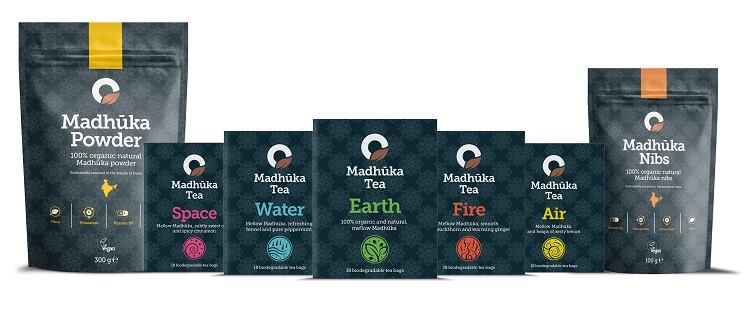Madhūka is an ingredient that stems from the Madhuca Longifolia tree, which grows in Sri Lanka, Nepal, Myanmar and India. The founders of ōForest stumbled across the ingredient on a trip to India, and realised that the ingredient was versatile enough to be used in a wide range of products.
“The Madhūka flower is sweet, since it is high in natural sugars,” Meera Shah, ōForest co-founder, told FoodNavigator. “That sweetness is intensified during the sun-drying process (after the flower falls).”
The taste can be enhanced, too. “We air roast the sun-dried flowers to give them a bitterness and crunchy texture that offsets some of the sweetness without losing the natural flavour. Our Madhūka has been described as nutty, caramel-like, malty and almost coffee-ish. It's one of the few superfoods that can claim such a title."
ōForest's is used in nibs, which can be used with muesli, cereal bars, or ‘as a crunchy topping on breakfasts, yoghurts or desserts,’; tea, which is ‘more akin to herbal infusions rather than traditional teas’ and can be drank ‘hot or cold and would even make a delicious bubble tea’; and powder, which can be used for smoothies, coffees, milkshakes, or even ‘a sweet, teriyaki-style marinade for savoury dishes, or to mix into soups and stews for added depth.’
The health benefits
Of course, Madhūka was originally used not for pleasure but for its health benefits. It has long been used in Ayurvedic medicine, an Indian medicine system that has been around for 5000 years.
“Madhūka is high in Potassium, Manganese, Vitamin B3, Fibre, essential amino acids and antioxidants,” Shah told us. “It is also salt and fat free. The Powder product is also high in Iron and Copper – the difference coming from the Stamen of the flower, which is also contained within the Powder.”
Because of the diverse range of vitamins and minerals in the ingredient, the brand can, according to Shah, make health claims ranging from reduction of tiredness and maintenance of bones, contribution ‘to normal formation of red blood cells and haemoglobin’ and ‘protection of DNA, proteins and lipids from oxidative damage.’

Working with farmers
The brand works with farmers in the forest in order to cultivate the ingredient for its products. It has helped the farmers to develop the already-existing methods that they had to cultivate the ingredient.
“In India, traditionally, during the short, annual harvest season, flowers used to be hand-picked individually off the forest floor after falling,” Shah told us. “In preparation for this, the local villagers would set intentional forest fires in order to clear the ground.
“We have worked with the forestry alliance and local communities to redesign and teach about the use of harvesting nets. These nets can be tied between trees and capture the falling flowers without the need for manual collection.” The results of this have been production increasing by four times, and waste being diminished by 35%, as well as no more forest fires.
“Once the flowers are collected, they are sundried for around 2-3 weeks to reduce the moisture levels from 80% to 12%. We then bring them over the UK where we air-roast them to further reduce the moisture levels down. At this point, they are ready to be cracked into nibs, ground into powder or blended with other natural ingredients to make our Teas.”
New to the UK
Madhūka has long been used by the people who live in the area where the ingredient originates from, but it isn’t until now that the ingredient has found its way to the UK.
“As a result of being a primarily tribal, indigenous food in India, Madhūka has always been consumed out of necessity (in Ayurvedic medicine) rather than for pleasure and very little experimentation was done with the raw product to unlock its full potential,” Shah told us.
“We are extremely proud, and feel very lucky, to have come across it and been able to test different production and cooking methods on it in our labs in the UK.
“We can’t wait for consumers in the UK to be able to try it and enjoy it, and hopefully before long, we will be able to showcase the plethora of what we can do with Madhūka in other countries too.”


